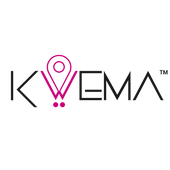Technology has had an important role when it comes to contact tracing
Experts agree that the adoption of digital contact tracing tools can make contact tracing process faster, more efficient, increase productivity, reduce potential exposure to the disease and reduce costs.
Kwema now offers contact tracing functionality.
In the past, contact tracing has been a useful strategy to control some disease outbreaks such as Ebola, SARS and tuberculosis. But what exactly is contact tracing and why is it so important right now?
The WHO defines contact tracing as the process of identifying, assessing and managing people who have been exposed to a disease to prevent onward transmissions by separating people who have (or may have) a disease from people who do not. Contact tracing for COVID-19 requires identifying people who have been exposed to the virus and backtracking their location for the last two weeks.
According to CDC, contact tracing should be conducted in the following four stages:
- Case investigation. When a person tests positive for COVID-19, public health staff proceed to interview the patient in order to get information including where the patient has been and who has been exposed to you during the last 14 days.
- Contact tracing. At this point, public health staff perform contact tracing by notifying people who were at high risk of getting infected through exposure. Contacts are notified by telephone, text message or email. In order to maintain privacy, the identity of the person infected is not revealed.
- Contact support. Contacts are provided with resources and information to support them in order to avoid contact with others who are not exposed and monitor their symptoms.
- Self-quarantine. In the case when a contact becomes ill, they are asked to stay at home and maintain social distancing for 14 days.
As we have explained, contact tracing is a process that involves investigating cases and continues until the disease transmission is interrupted. For this reason, many experts and researchers agree that contact tracing is a key strategy to prevent the spread of COVID-19.
According to McKinsey & Company, “a highly effective program of testing, tracing, isolation of cases, and quarantining contacts can achieve similar benefits as a lockdown while allowing the vast majority of the population the freedom to conduct day-to-day activities.” Moreover, is the most effective way for controlling infectious diseases outbreaks at a low economic cost.

Source: McKinsey & Company COVID-19 Facts and Insights 2020
Some countries had implemented contact tracing successfully like in South Korea. By late February, the asian country was the second largest outbreak of COVID-19 next to China. The number of reported cases reached a peak of 909 daily infections. The Korean CDC in collaboration with government authorities and telecommunication companies, worked together immediately following an aggressive and widespread strategy based on extensive testing, contact tracing and quarantining. By March, daily cases started to count by dozens or less.
Nevertheless, traditional contact tracing requires trained people with specialized knowledge and skills including an understanding of medical terms and principles of infection exposure, the patient confidentiality, sensible interpersonal skills, how to refer people to medical or public resources and much more.
In fact, a study done by Johns Hopkins University estimates the US needs at least 100,000 additional public health workers to help with contact tracing. Moreover, it estimates each person with coronavirus infects another two or three other people, making it very difficult to find everyone who could be infected.
Technology has had an important role when it comes to contact tracing. Experts agree that the adoption of digital contact tracing tools can make contact tracing process faster, more efficient, increase productivity, reduce potential exposure to the disease by limiting physic contact as well as reduce costs. Not only is contact tracing an effective way to halt the spread of coronavirus disease but also it can be a cost-effective alternative for blanket lockdowns.
In our last blog, we explained why certain people and places (also called “super-spreaders”) can spread the more virus depending on their circumstances. As you know, workplaces can become potential places with higher levels of COVID-19 transmissions, especially if employees perform activities in a closed environment where people are in close contact for a long period of time.
The best measure to prevent super-spreader events at your workplace is identifying COVID-19 cases and any person who was in contact with them as soon as possible.
With Kwema’s Smart Badge for Contact Tracing & Emergency Alerts, your employees follow a seamless checkpoint system to check in and check out of high-traffic areas like the cafeterias, conference rooms, major hallways and entrances.
When somebody is diagnosed positive for COVID-19 using GDPR Guidelines Kwema allows you to do three key things:
- Trace WHERE the employee was
- Identify WHO they may have come into contact with
- Classify all employees into 3 RISK GROUPS and take action to prevent spread

Contact us for a Free Assessment on how likely your employees are to adopt new safety measures for COVID-19 by sending an email to: covid19@kwema.co
Watch how Kwema is disrupting workplace safety
what is contact tracing
why is contact tracing important
contact tracing definition
